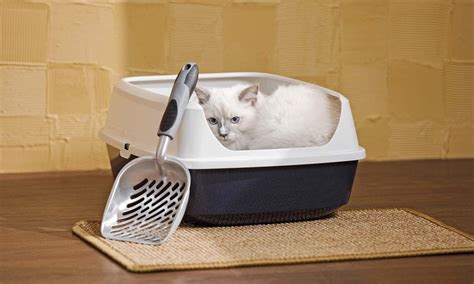Introduction
Cats are beloved companions, but their litter habits can be a source of frustration for many owners. With the right knowledge and training, however, you can create a harmonious litter box routine that keeps your cat happy and your home clean.

Types of Cat Litter
The first step to choosing the right litter is understanding the different options available. Here are some of the most common types:
| Type | Pros | Cons |
|---|---|---|
| Clay | Affordable, absorbent | Dusty, heavy |
| Clumping Clay | Forms clumps that are easy to remove | More expensive than regular clay |
| Pine | Natural, biodegradable | Can be messy, not as absorbent as clay |
| Crystal | Extremely absorbent, low-dust | More expensive than other types |
| Paper Pellets | Biodegradable, lightweight | Can be expensive, not as absorbent as clay |
Choosing the Right Litter Box
The litter box is just as important as the litter itself. Consider the following factors when choosing one:
- Size: The box should be large enough for your cat to comfortably turn around in.
- Shape: Round boxes are good for cats who like to dig, while covered boxes offer more privacy.
- Location: Place the box in a quiet, private area where your cat feels safe.
Training Your Cat
Training your cat to use the litter box is essential. Here are some tips:
- Start young: Begin training as soon as you bring your kitten home.
- Use positive reinforcement: Reward your cat with treats or praise when they use the litter box.
- Clean the box regularly: Cats prefer a clean litter box, so scoop out solids daily and change the litter every week.
- Don’t punish your cat: If your cat has an accident, don’t punish them. Instead, clean up the mess and try to figure out what went wrong.
Common Mistakes to Avoid
- Changing the litter type too often: Cats can become upset if their litter type changes frequently.
- Using a scented litter: Many cats dislike scented litters, which can irritate their noses.
- Placing the box in a high-traffic area: Cats need privacy when using the litter box.
- Overfilling the box: Too much litter can make it difficult for cats to dig.
Troubleshooting Litter Box Problems
If your cat is having trouble using the litter box, there could be a few reasons.
- Health problems: Urinary tract infections or other medical conditions can cause cats to avoid the litter box.
- Stress: Changes in the cat’s environment or routine can cause stress, which can lead to litter box problems.
- Behavioral problems: Sometimes, cats develop behavioral problems that make them unwilling to use the litter box.
If you’re having trouble training your cat or solving litter box problems, consult with a veterinarian or certified feline behaviorist.
FAQs
-
How often should I change my cat’s litter?
– Change the litter every week, and scoop out solids daily. -
What if my cat won’t use the litter box?
– Rule out health problems, stress, and behavioral issues. Consult with a veterinarian or behaviorist. -
How can I get my cat to stop scratching around the litter box?
– Provide a large enough litter box, and place it in a quiet, private area. -
What is the best litter for kittens?
– Clumping clay litter is a good option for kittens, as it is easy to clean and helps prevent messes. -
What is the most absorbent litter?
– Crystal litter is the most absorbent type of litter. -
How do I teach my cat to use a new litter box?
– Gradually introduce the new box by placing it next to the old one. Reward your cat for using the new box.





















